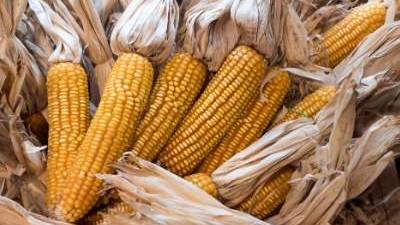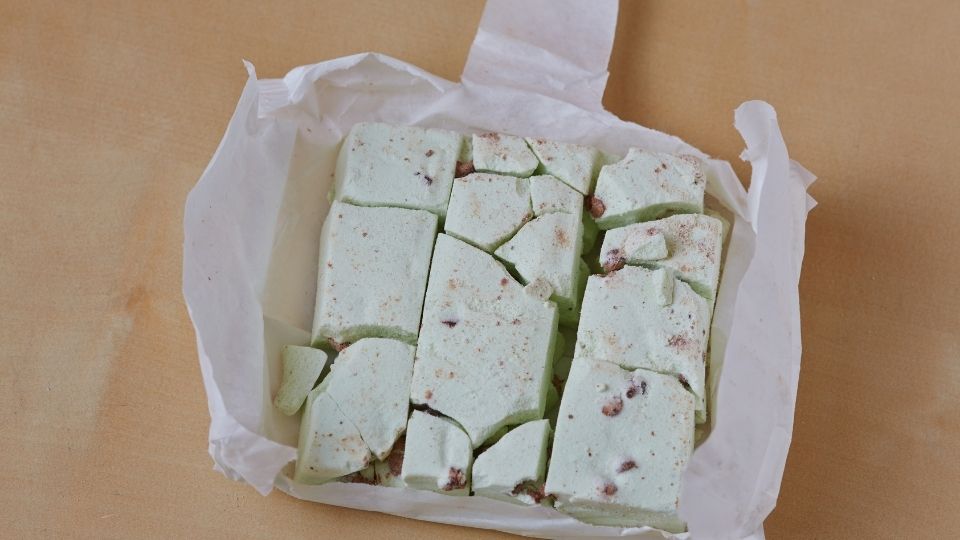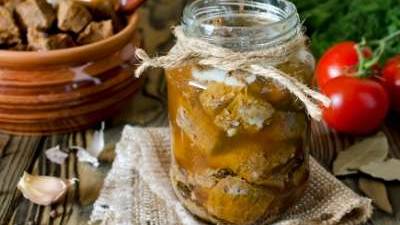Testing Foods for Dryness

You can determine when the product is dry by feel or by calculation of the amount of water remaining in the product.
By Feel
Fruits should be dried until leathery, but not hard. The time required for drying will range considerably. Fruit always feels softer and less dry when warm in the dryer, therefore remove a piece from the dryer and let cool before testing. The sample will show no moisture when cut and pressed. When a few pieces are squeezed together they fall apart when the pressure is released. They have a leathery or suede-like feel. High sugar fruits, like figs and cherries, will feel slightly sticky. Fruit leather can be peeled from the plastic wrap.
Vegetables are generally brittle or tough when they are dry enough. If there is a question as to whether vegetables are dry enough, reduce the temperature and dry the product a little longer, using a low temperature toward the end of the drying period. There is little danger of damage being done by this extra drying time.
By Calculation
For optimum plumpness of produce while maintaining safety, calculate the percent solids in the dried product to determine if the product is adequately dry.
- Weigh the container that will be used on the scale. (Tray Wt.)
If your scales allows you to do so, adjust so that the container weight = 0 - Weigh the raw produce in the container (Product and Tray Wt.)
- Calculate Raw Product Wt. (Raw Wt.):
Product & Tray Wt.
- Tray Wt.
Raw Wt - Calculate desired final Wt. of dry product using the following formula
(Raw Wt. ) x (Solids %) = Desired
90%* Dry Wt.
* 90% solids is a good value to use for vegetables.
Fruits are moister if 80% is used for calculation purposes. Do not use a lower percent value for solids.
For example:
Want to dry cherries to 80 % solids (20% water).
Solids in raw cherries (from Table 3) = 14%
Container = 5 oz.
Container + cherries = 45 oz.
Wt. of raw cherries = 40 oz.
40 oz. X 14% = 7 oz. final dry weight
80%
The final weight of the cherries should be 7 oz. Since it will be weighted in a 5 oz. container, the weight will be 7+5=12 oz. If you adjusted scales so that container weight = 0, the final weight is 7 oz.
If fruit is dried to an 80% solids level, it will be safe from microbial spoilage with the exception of mold growth. To control mold growth, vacuum pack the dried fruit or freeze the product.
How to Vacuum Pack Dried Produce
Fill canning jars with dried fruit. With lid lightly screwed down, place jars in oven at 325° F for 15 minutes. Tighten lid when removed from oven. Test the lids on the dried fruit after it has cooled to see that you do have a vacuum seal.
Never vacuum pack your dried vegetable unless you know they are truly dry, either by drying to a brittle stage or by calculation. For vegetables, dry to 90% solids level.
Percent Solids in Raw Fruit and Vegetables
Oven drying is harder to control than drying with a dehydrator; however some products can be quite successfully dried in the oven. It typically takes two to three times longer to dry food in an oven. Thus, the oven is not as efficient and uses more energy.
| Fruits | Percent Solids | Vegetables | Percent Solids |
| Apples | 16% | Beans | 10% |
| Apricots | 14% | Beets | 13% |
| Bananas | 26% | Broccoli | 11% |
| Blueberries | 16% | Cabbage | 8% |
| Coconut | 49% | Carrots | 12% |
| Cherries, Sour | 14% | Cauliflower | 8% |
| Cherries, Sweet | 20% | Celery | 5% |
| Figs | 21% | Corn | 24% |
| Grapes | 19% | Eggplant | 8% |
| Nectarines | 14% | Mushrooms | 9% |
| Peaches | 12% | Onion | 9% |
| Pears | 16% | Parsley | 12% |
| Pineapple | 14% | Peas in pod | 12% |
| Plums | 14% | Peppers, bell | 7% |
| Raspberries | 14% | Potato | 21% |
| Rhubarb | 5% | Spinach | 9% |
| Strawberries | 9% | Squash | 6% |
| Tomatoes | 6% | ||
| Turnip | 7% |
References
- Source: USDA Handbook 8-8, 8-11. Composition of Foods. 1982, 1984.
Authors
Charlotte P. Brennand
Related Research






